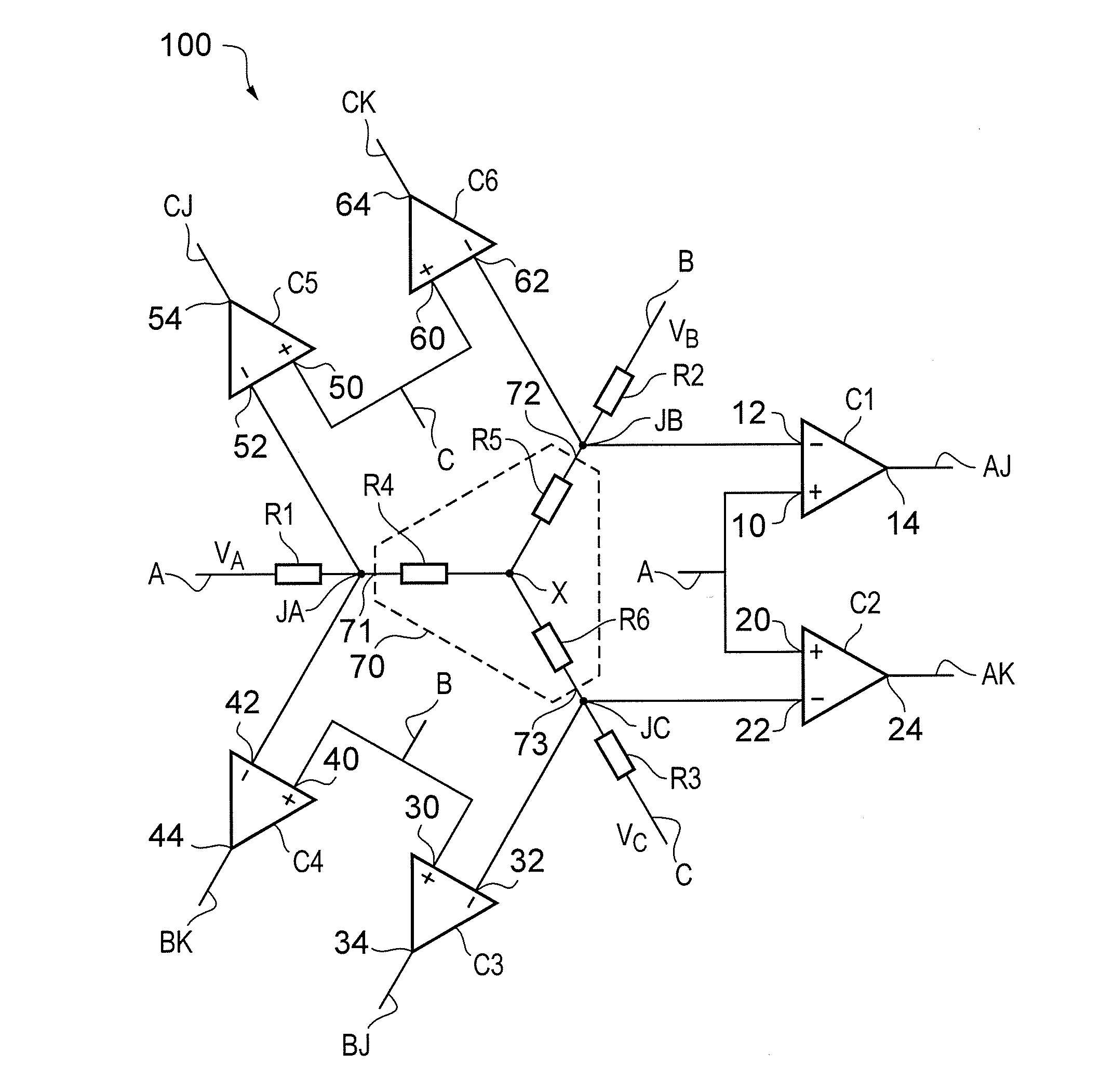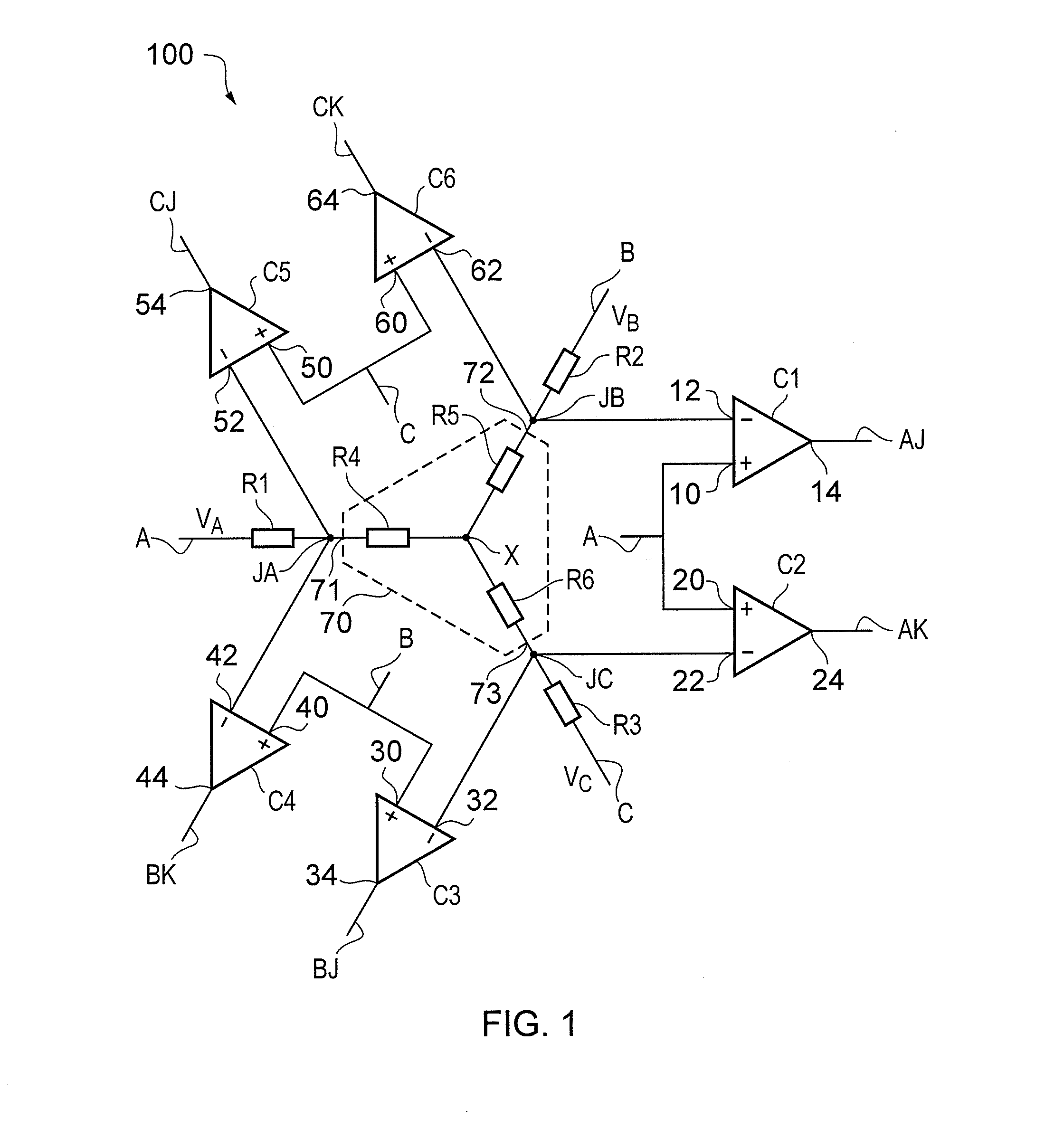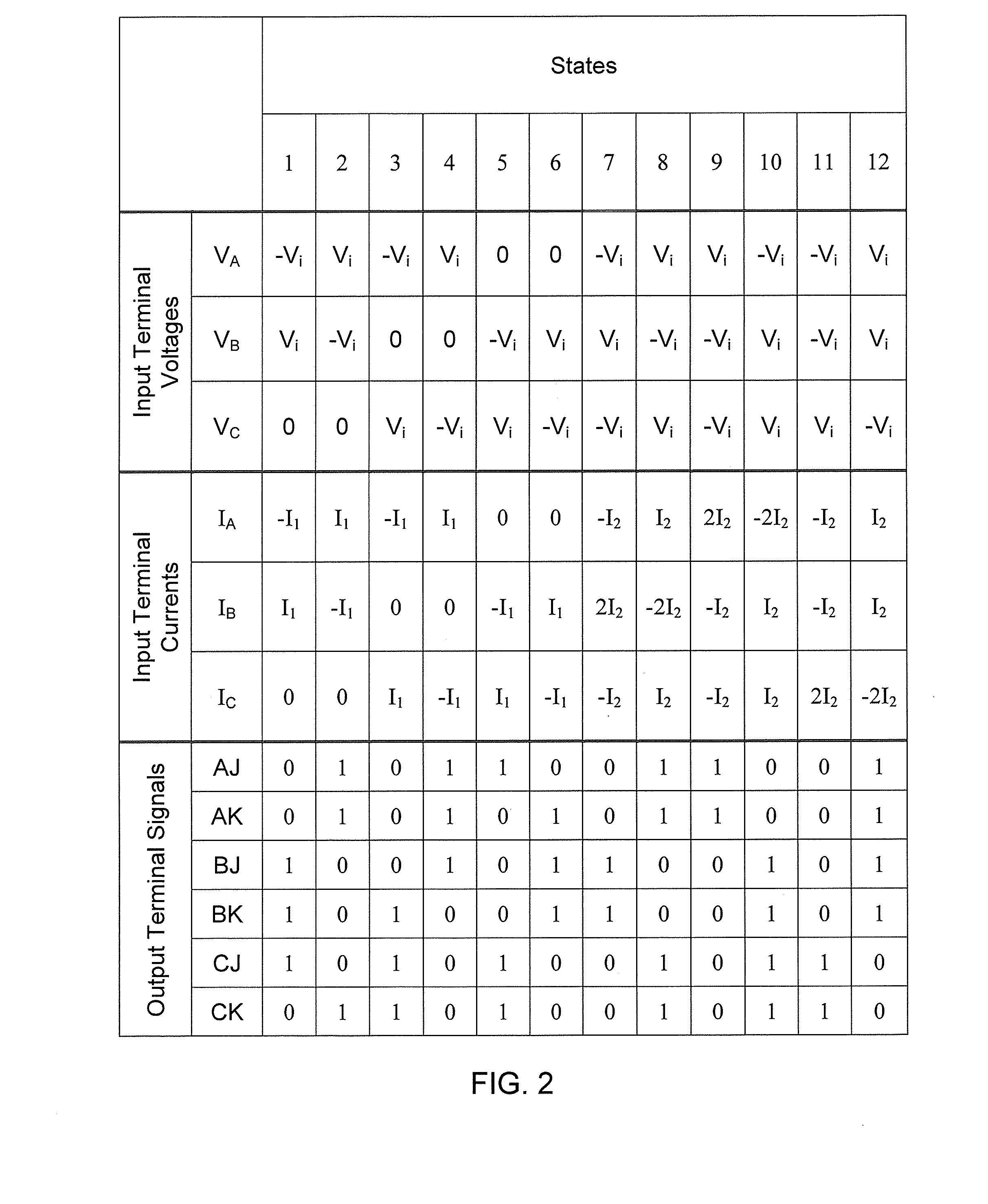Three-Wire Three-Level Digital Interface
a three-level digital interface and receiver technology, applied in digital transmission, diversity/multi-antenna systems, pulse techniques, etc., can solve the problems of difficult physical implementation, comparable power consumption of phase locked loops to power consumption of rfic frequency synthesisers, etc., to avoid the introduction of parasitic capacitance of common nodes, high noise immunity, and high noise immunity
- Summary
- Abstract
- Description
- Claims
- Application Information
AI Technical Summary
Benefits of technology
Problems solved by technology
Method used
Image
Examples
Embodiment Construction
[0003]According to a first aspect there is provided a receiver for a three-wire digital interface, comprising:
[0004]first, second and third input terminals;
[0005]first, second, third, fourth, fifth and sixth output terminals;
[0006]first, second and third junction nodes;
[0007]a first resistive element coupled between the first input terminal and the first junction node;
[0008]a second resistive element coupled between the second input terminal and the second junction node;
[0009]a third resistive element coupled between the third input terminal and the third junction node;
[0010]a network comprising first, second and third network terminals coupled to, respectively, the first, second and third junction nodes, the network having substantially the same impedance between all pairs of the first, second and third network terminals;
[0011]a first comparator having a non-inverting input coupled to the first input terminal, an inverting input coupled to the second junction node, and an output co...
PUM
 Login to View More
Login to View More Abstract
Description
Claims
Application Information
 Login to View More
Login to View More - R&D
- Intellectual Property
- Life Sciences
- Materials
- Tech Scout
- Unparalleled Data Quality
- Higher Quality Content
- 60% Fewer Hallucinations
Browse by: Latest US Patents, China's latest patents, Technical Efficacy Thesaurus, Application Domain, Technology Topic, Popular Technical Reports.
© 2025 PatSnap. All rights reserved.Legal|Privacy policy|Modern Slavery Act Transparency Statement|Sitemap|About US| Contact US: help@patsnap.com



